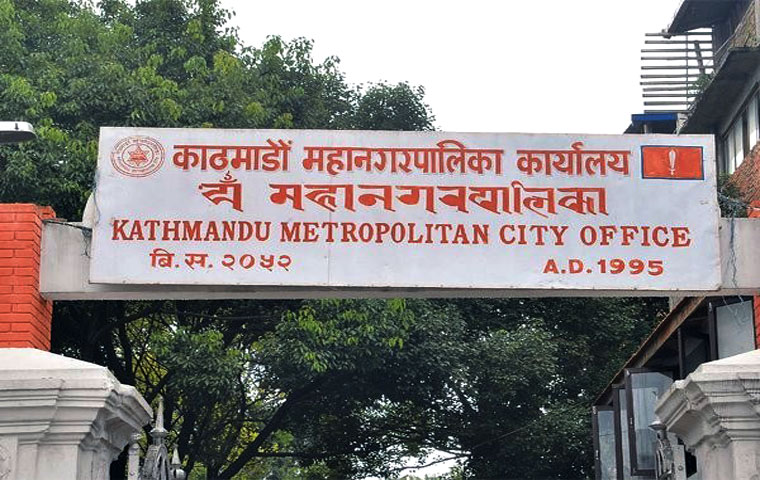
Kathmandu Metropolitan City Enhances Security with AI-Enabled CCTV Systems
Kathmandu Metropolitan City has taken a significant step forward in enhancing urban security and surveillance by installing Artificial Intelligence (AI) integrated Closed Circuit Television (CCTV) cameras. These advanced cameras come equipped with Automatic Number Plate Recognition (ANPR) and Facial Recognition System (FRS) capabilities, marking a pivotal advancement in the city's surveillance efforts.
Collaboration with Nepal Police
This initiative has been implemented in collaboration with the Nepal Police, aiming to bolster the monitoring of urban areas, ensuring a higher level of security. The AI technology in these cameras facilitates detailed monitoring of vehicles and individuals, aiding in the effective management of urban safety and traffic regulations.
Extensive Network of CCTVs
To date, the city boasts a total of 335 CCTVs installed across various locations. The installation process has been strategic, with a mix of 25 PTZ (Pan, Tilt, Zoom) and 310 fixed cameras, along with specialized ANPR and FRS cameras positioned at critical points to maximize coverage and efficiency in surveillance.
Financial Collaboration
The KMC has financially backed this project, providing substantial funds to the Nepal Police for the procurement and installation of these high-tech surveillance systems. This collaboration underscores the commitment to leveraging technology for public safety.
Advanced Surveillance Features
The AI features of the installed cameras include vehicle identification, number plate recognition, facial recognition, and traffic rule enforcement capabilities. This technology not only aids in traffic management but also significantly enhances the ability to monitor and respond to criminal activities, locate missing persons, and manage public gatherings and events with greater efficiency.
Future Expansion Plans
Plans are in place to further expand the CCTV network, ensuring comprehensive coverage across key routes and areas within the city. This expansion will include matching and managing cameras across additional routes, further strengthening the surveillance system.
Control Room Monitoring
The police control room is set to monitor these AI-based CCTV feeds, transitioning from the traditional Video Management System (VMS) to a more sophisticated AI-driven surveillance approach. This shift allows for real-time monitoring of a vast array of camera feeds, improving response times to incidents and enhancing overall urban management.
Legal and Ethical Considerations
The installation and operation of CCTV cameras are governed by detailed procedures issued by the Ministry of Home Affairs, ensuring respect for privacy and human rights. The procedures dictate the ethical placement of cameras, data storage, and confidentiality, aligning with the right to privacy laws.
Objectives of the Initiative
The overarching goal of this initiative is to foster a safer urban environment by deterring unauthorized activities, enhancing law and order, reducing accidents, managing public spaces, and protecting cultural heritage sites. This comprehensive surveillance system is a testament to Kathmandu Metropolitan City's dedication to transparent urban management and public safety.
Historical Context and Legal Framework
The journey towards a monitored city began in 2063 with the installation of analog CCTV cameras by the Nepal Police, significantly expanding during the 18th SAARC Summit in 2071. The legal framework for CCTV installation and operation has evolved, culminating in the Communication and Information Act issued by Kathmandu Metropolitan City in 2080, which outlines the requirements for CCTV installation and data security, ensuring adherence to privacy rights and ethical surveillance practices.
Kathmandu Metropolitan City's implementation of AI-integrated CCTV systems represents a forward-thinking approach to urban security and surveillance. By combining technological innovation with strategic collaboration and adherence to legal and ethical standards, the city sets a benchmark in creating a secure, well-monitored urban environment conducive to the well-being and safety of its residents.
Summary:
- Kathmandu Metropolitan City installs AI-equipped CCTV cameras for enhanced urban surveillance.
- Cameras feature Automatic Number Plate Recognition (ANPR) and Facial Recognition System (FRS) capabilities.
- The initiative is a collaboration between the Metropolitan Municipality and the Nepal Police.
- AI technology enables detailed monitoring of vehicles and individuals for improved safety.
- The total number of CCTVs in the city has reached 335, offering extensive surveillance coverage.
- The KMC provides significant funding to support the surveillance project.
- Installed CCTVs have vehicle identification, number plate recognition, and facial recognition capabilities.
- The technology aids in traffic violation monitoring and efficient urban traffic management.
- It also enhances the capability to prevent crimes, locate missing persons, and monitor public spaces.
- Plans are underway to expand the CCTV network for broader coverage across key routes and areas.
- The police control room monitors the AI-based CCTV feeds, transitioning from traditional systems to AI-driven surveillance.
- Surveillance feeds are monitored in real-time, improving incident response times and overall urban management.
- Installation and operation of CCTV cameras are governed by procedures ensuring respect for privacy and human rights.
- The initiative aims to deter unauthorized activities and enhance law and order through transparent urban management.
- Historical context includes the beginning of city monitoring in 2063 with the installation of analog CCTV cameras by the Nepal Police.
- Legal framework for CCTV operation evolved, culminating in the Communication and Information Act by Kathmandu Metropolitan City in 2080.
- The act outlines requirements for CCTV installation and data security, ensuring privacy rights adherence.
- CCTV footage storage is mandated for three months, with confidentiality maintained as per legal procedures.
- Commercial and private CCTV installations must be reported to the nearest police or district administration office.
- The surveillance system's main goals include reducing accidents, managing public spaces, and protecting cultural heritage sites.





